Audubon Prints, Information
What are the differences between an Audubon Havell engraving and Bien Lithograph?
How to differentiate between the two Double-Elephant folio Editions
Audubon’s historic opus, Birds of America, was issued in two editions at double-elephant folio size (approximately 26 1/2″ x 39 1/2″). First was the Havell edition, begun by W.H. Lizars in 1826 but swiftly taken over by Robert Havell Jr. who completed the project in 1838 and employed the printing process of aquatint-engraving. Second was the Bien edition, posthumously printed in New York by Julius Bien between 1858 and 1860 through the revolutionary technique of chromolithography. While both editions of Audubon’s double-elephant folio represent the same subject matter, visually the editions are distinct. This essay will consider the primary distinguishing features between the two editions including the technological difference in their manufacture, and the resulting aesthetic differences in the prints themselves.
Audubon Havell Ed. Pl 366, Iceland or Jer Falcon
Hand-colored aquatint engraving, 1827-1838
View Product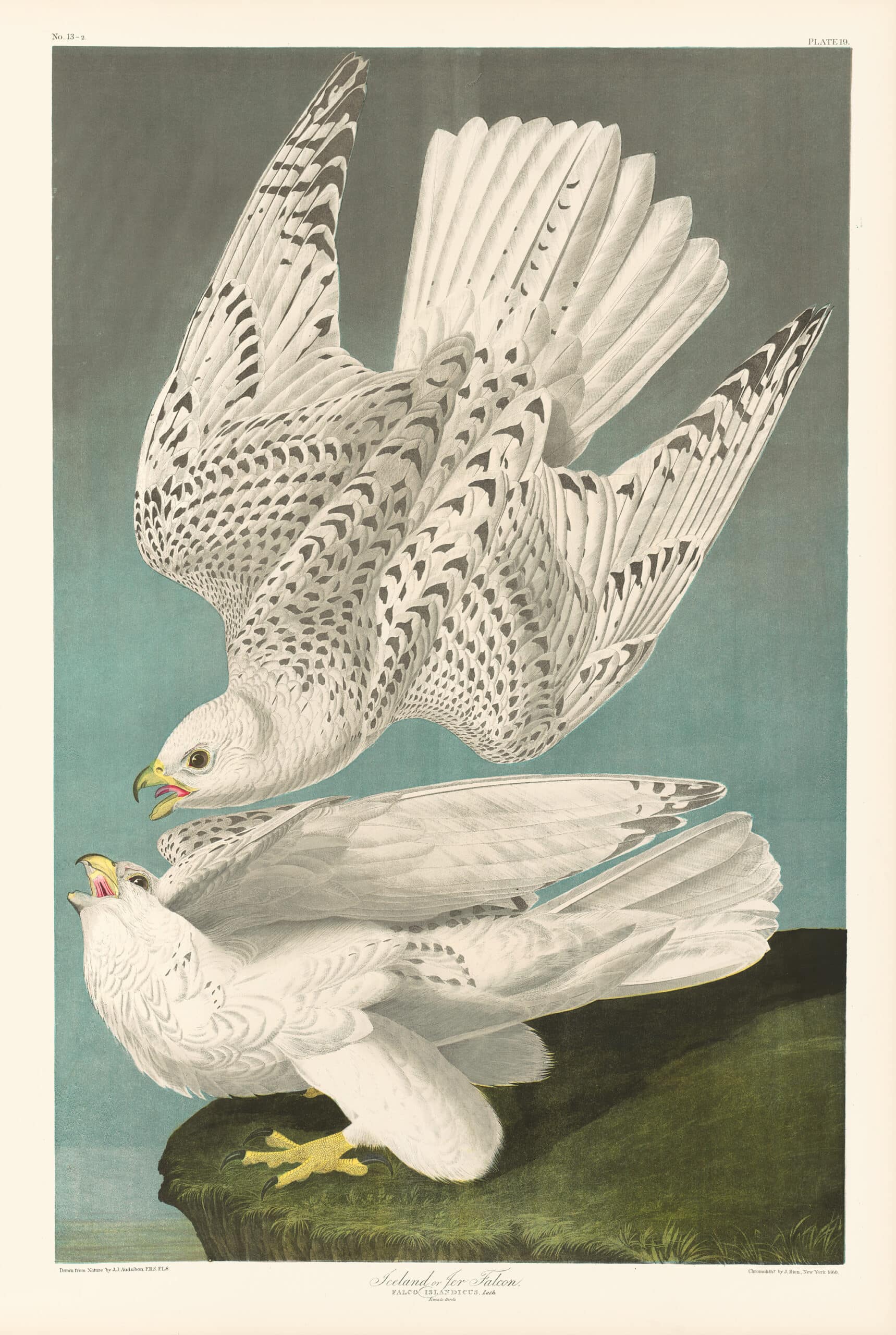
Audubon Bien Edition Pl. 19, Iceland or Jer Falcon
Chromolithograph, 1858
This inquiry will begin with a visual analysis of Audubon’s Havell and Bien editions of the Jer Falcon before examining the technical differences in the production of the two prints. On the left we have the Havell edition Pl. 366 Jer Falcon while on the right the Bien edition Jer Falcon Pl. 19. Immediately we are struck by the color variation between the two prints. The Havell edition print purports a dark, ominous sky behind the two female falcons, while the Bien edition print features a gradated sky of vivid turquoise. Likewise, the Havell edition print achieves a greater range of value between the darkest portions of the print and the lightest aspects of it. In contrast, the tonality of the Bien print resides within a narrower range of value. As a result, the Bien edition print feels lighthearted while the Havell edition print has a severe and dramatic beauty to it.
The respective printing processes employed are a primary point of departure between the Havell edition and the Bien edition because this technical aspect of their manufacture greatly determines the aesthetic appearance of the prints. The Havell edition was made through the processes of etching (synonymously referred to as “engraving” during this time) and aquatint before being completed with hand-applied color. Etching is an intaglio printmaking process that involves incising lines into a copper plate. The lines will then act as receptacles for ink. During the first stages of the etching process, the printmaker will coat the surface of a clean copper plate with resin that, once dry, will serve as the surface into which the desired image or design will be carved. The copper plate bearing the resin and incised lines is then placed in a bath of nitric acid where the exposed portions of the plate, the lines, are eaten away by the acid, thus etching the design into the copper plate itself. Depending on the printmaker’s usage of the technique, etching tends to result in crisp, delicate linework and bold, definitive delineation of form.

To the left is the incised copper plate used to render the print on the right, Audubon’s Havell edition aquatint-etching of the Black Vulture or Carrion Crow, Pl. 106
View ProductAs previously mentioned, the Havell edition prints are rendered through both etching and aquatint, which is a similar printing process often used as an adjunct to the former technique in order to modulate forms by providing tonality and atmospheric texture. Through aquatint a greater portion of the copper plate is exposed to the nitric acid through a layer of granulated resin. Instead of incising lines into the resin as in etching, aquatint allows for a broader swath of surface area to be exposed resulting in a series of small dots that resemble shading on a drawing. After the printing was complete, the etchings were then hand-painted with watercolor.
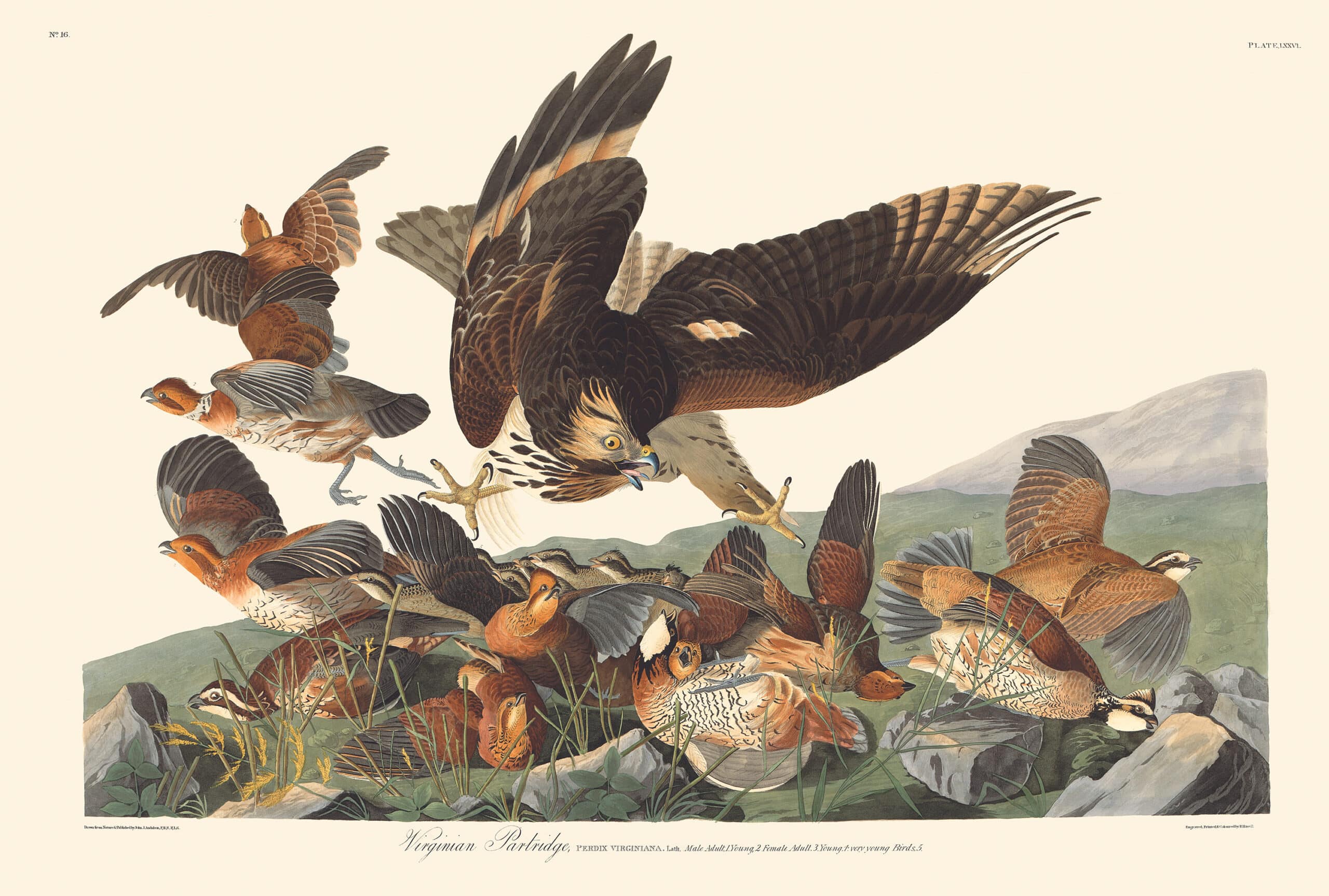
Audubon Havell Edition Pl. 76, Virginian Partridge
Hand-colored engraving
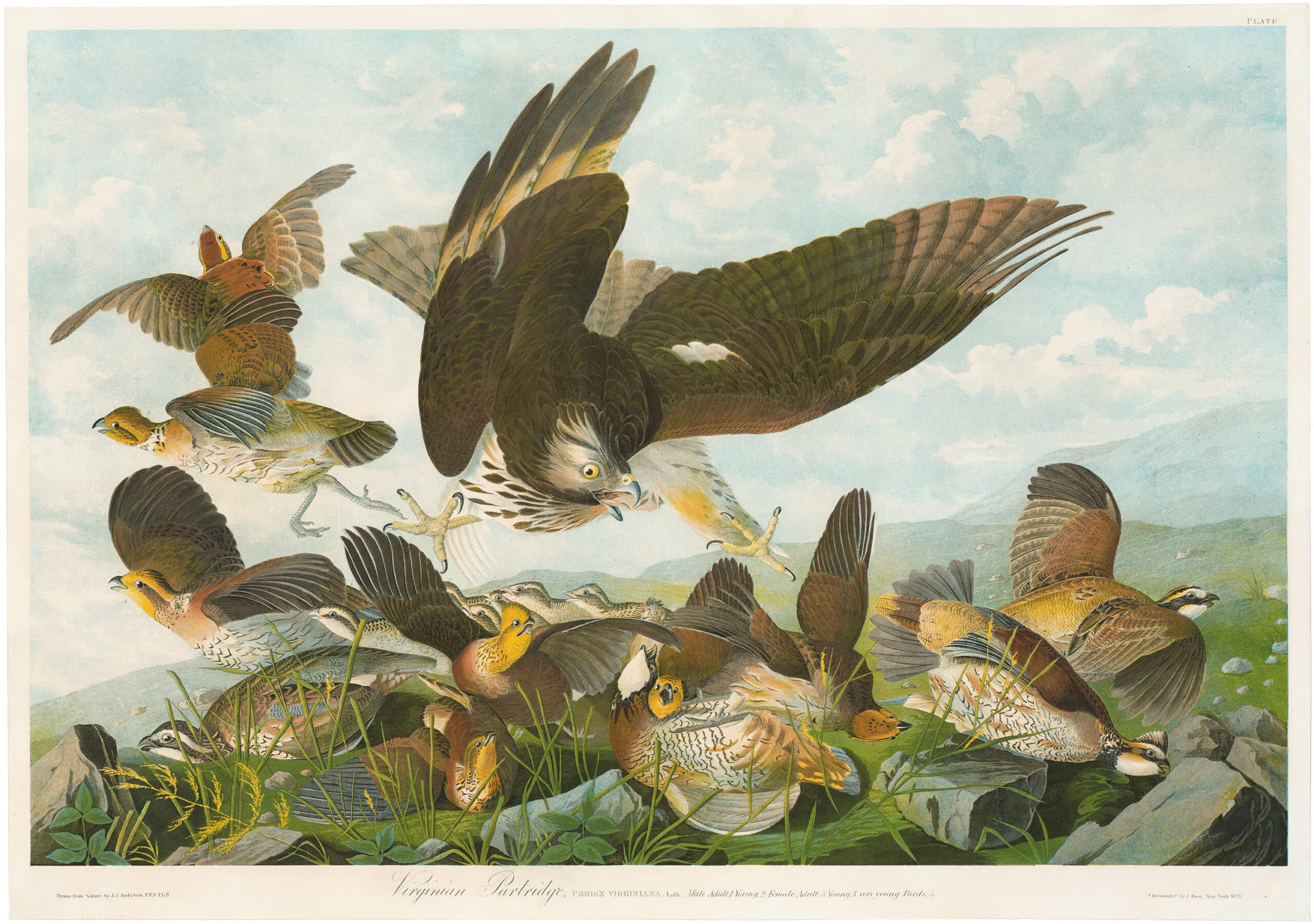
Audubon Bien Ed. Pl. 289, Virginian Partridge
Chromolithograph
Chromolithography, on the other hand, is a planographic printmaking technique that tends to result in a greater degree of spontaneity in the linework. The linework of lithographs is often visually comparable to that of a charcoal drawing or crayon sketch in that the lines tend to fray and do not have a uniform appearance but rather respond to the guidance of the artist’s hand. This is due to the process itself which begins with a printmaker grinding the surface of a limestone block to level it. After the surface is smooth, the lithographer draws directly onto the surface of the limestone with a greasy substance, often a crayon, before coating the surface with gum arabic and a mild nitric acid solution in order to etch the drawing onto the surface of the stone. Unlike copper-plate etching, in lithography there is no change in texture to the stone’s face, rather the memory of the greasy crayon’s touch is retained on the surface of the stone and will later appear once ink is applied, sticking only to those areas delineated by the greasy crayon. The aesthetic results of this printing technique lend the prints a greater degree of flexibility and immediacy in the linework, and a built-in method for shading that does not depend on aquatint.
Bien Edition Great White Heron
Unlike the Havell edition, the Bien edition prints are not colored by hand but are primarily color printed (with occasional finishing touches applied manually). In the same lithographic process outlined above, the colored portions of the image are etched onto a stone, one stone for each color, before the sheet of paper is run through the press as many times as there are stones so that all the colors and outlines register. As a result of this extensive coloring process, as well as the haste with which this particular edition was produced, we often see a greater degree of variance in the coloring of the Bien edition prints than we do in the Havells. In his book, The Birds of America: John James Audubon, The Bien Chromolithographic Edition, Joel Oppenheimer suggests that “The alteration of the sky color was most likely implemented because of the limited capacity for early chromolithographs to print large fields of dark colors” (p.63) such as those seen in the Jer Falcon and Great White Heron.
Havell Edition Great White Heron
In addition to the striking difference in color, the Havell and Bien edition prints have numerical, substrate, and tactile differences. To begin with, the numbering system utilized for the Havell edition is completely different from that of the Bien. For instance, the Great White Heron in the Havell edition is Plate 281, identified using Roman numerals, while in the Bien the same print is Plate 368, delineated in Arabic numerals. Additionally, the part number of each print has a different appearance. While the Havell edition will have a single number outlined in the top left corner, the Bien edition will have two numbers that denote not only the part number but also the prints organization within that part. To read more about plate number and part number check out our guide.
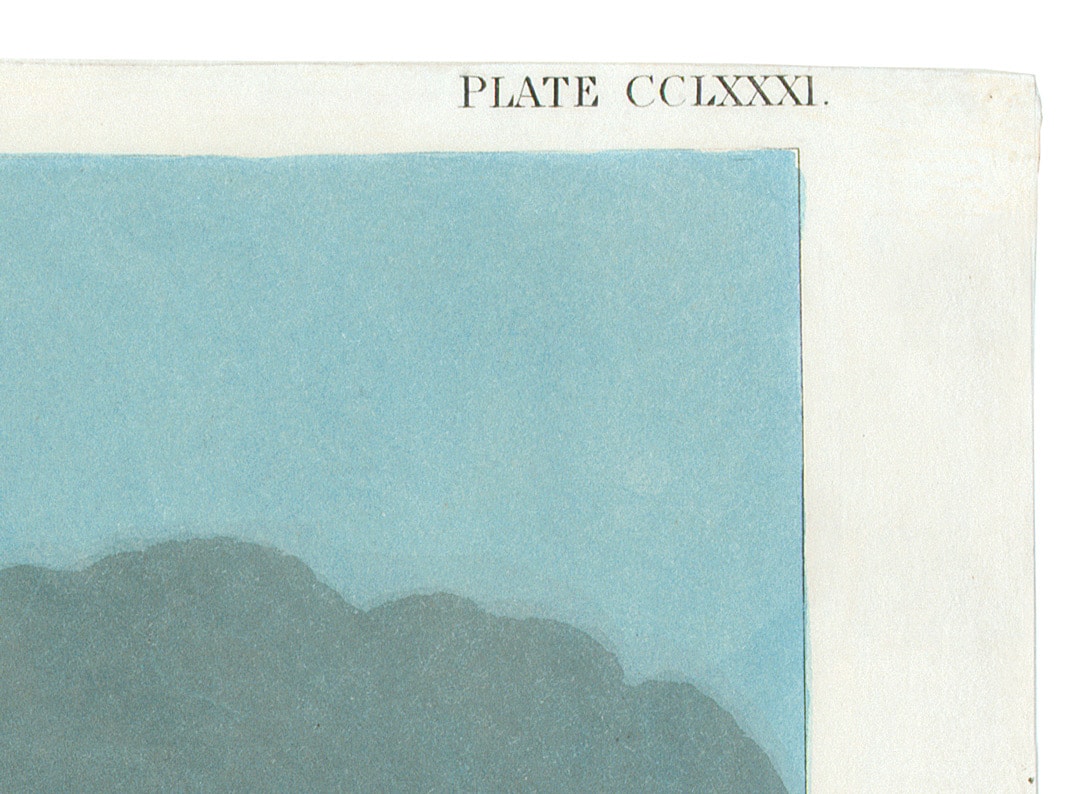
Havell edition Pl. 281, Great White Heron

Bien Edition, Pl. 368 Great White Heron
When considering the paper substrate used for the respective editions, both employ double-elephant folio size paper, but only the Havell edition has a watermark and platemark. The watermark can be discerned in the margins of the print by shining a light through the sheet which will reveal a watermark reading J. Whatman or J. Whatman Turkey Mill along with the year the paper was milled. The Bien edition, on the other hand, does not have this feature. Additionally, Havell edition prints have a platemark which, not unlike an embossment, is “A depression produced in the printing process caused by the edge of the printing plate” (definition sourced from our Glossary). The Bien edition on the other hand has no such depression because the paper and the lithographic stone are on the same plane when run through the press.
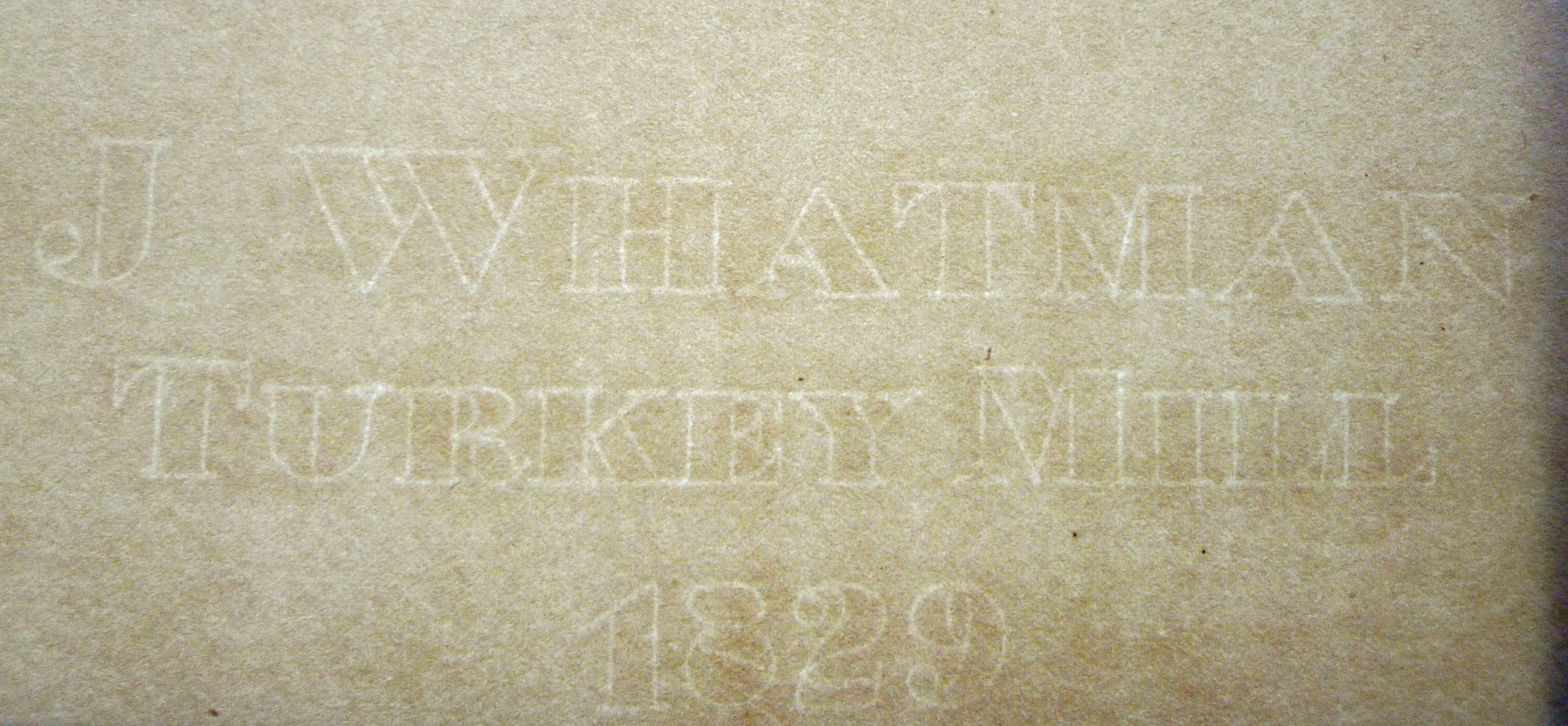
J. Whatman Turkey Mill 1829 watermark, present only on Havell edition Audubon prints

Plate mark, present on untrimmed Havell edition prints
While from a market standpoint Havell prints demand higher prices, Bien edition prints are more rare because fewer prints were produced. In fact, the edition was never completed due to the onset of the American Civil War, which permanently halted the enterprise. While the Havell edition folio boasts 435 prints, the Bien edition contains 150 plates on 105 sheets (often two plates were printed on a single sheet for the smaller birds). Nevertheless, the Bien edition stands as an example of early color printing technology and is “the largest and most valuable color plate book ever published in America.”
To continue exploring the intricacies and complexities of the Bien edition, please check out Joel Oppenheimer’s book The Birds of America: John James Audubon, The Bien Chromolithographic Edition.

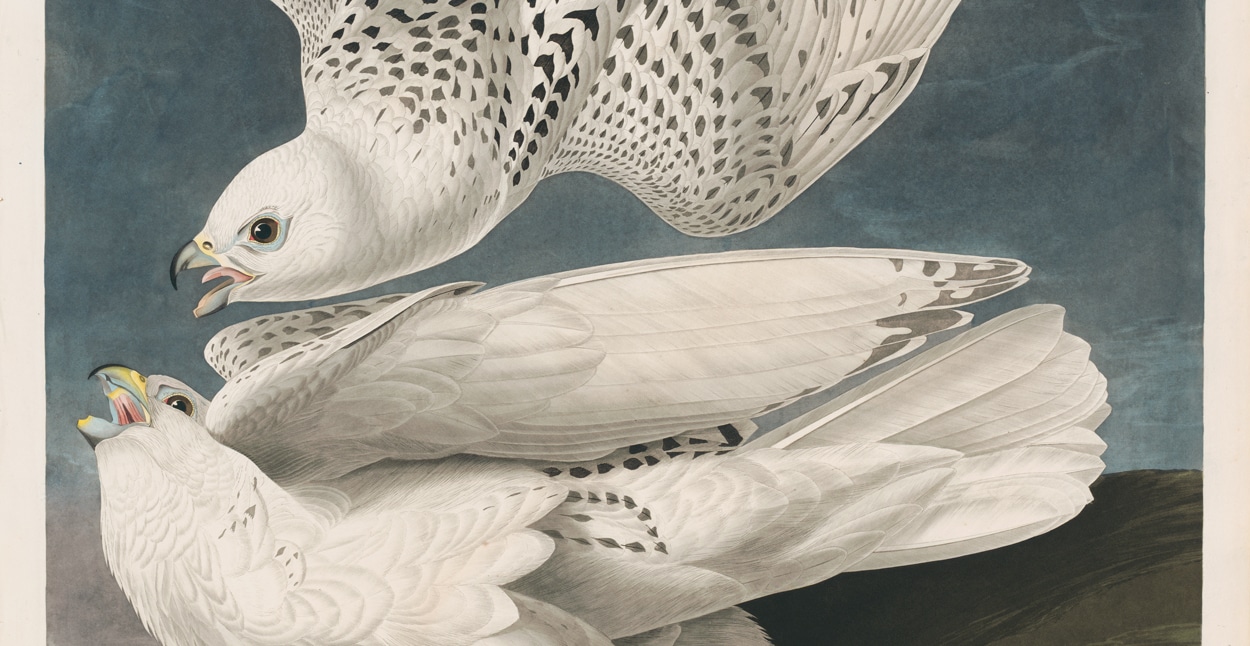



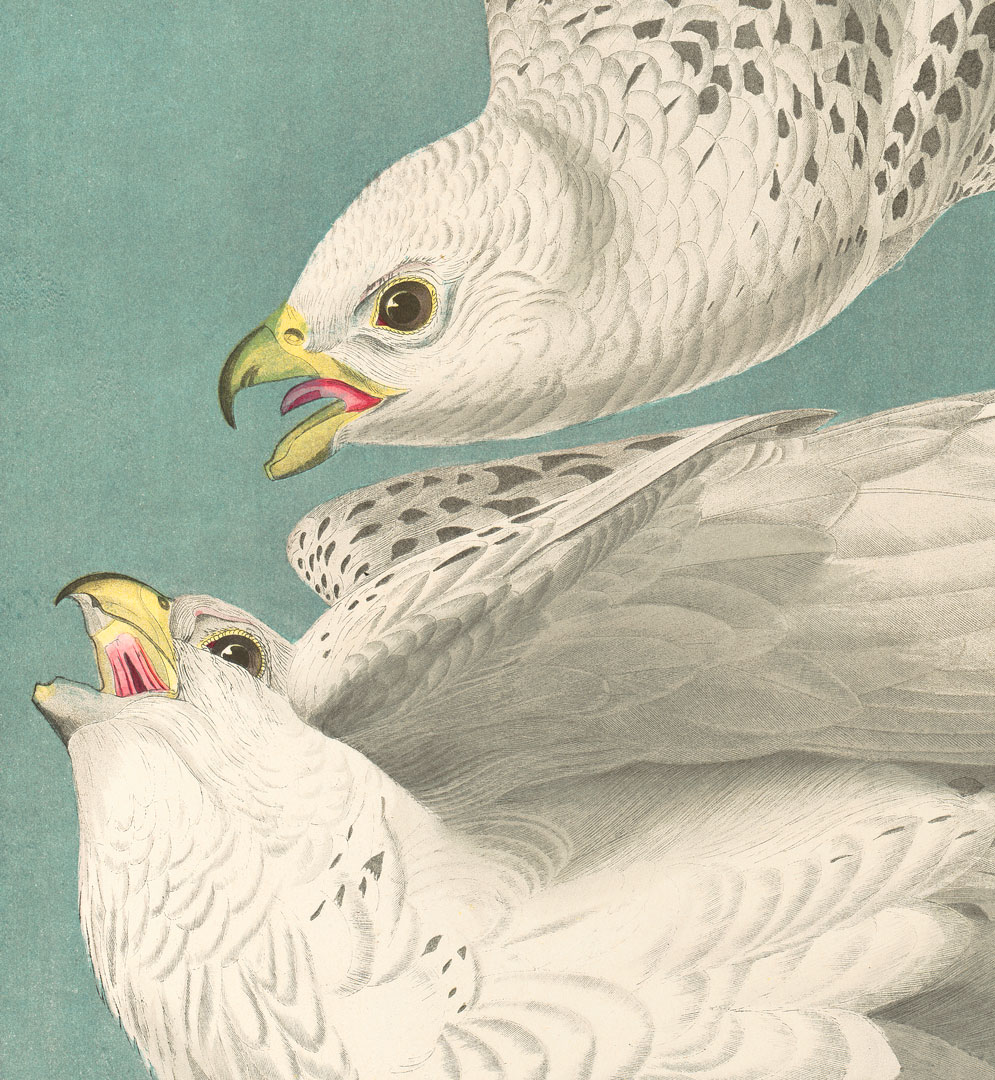
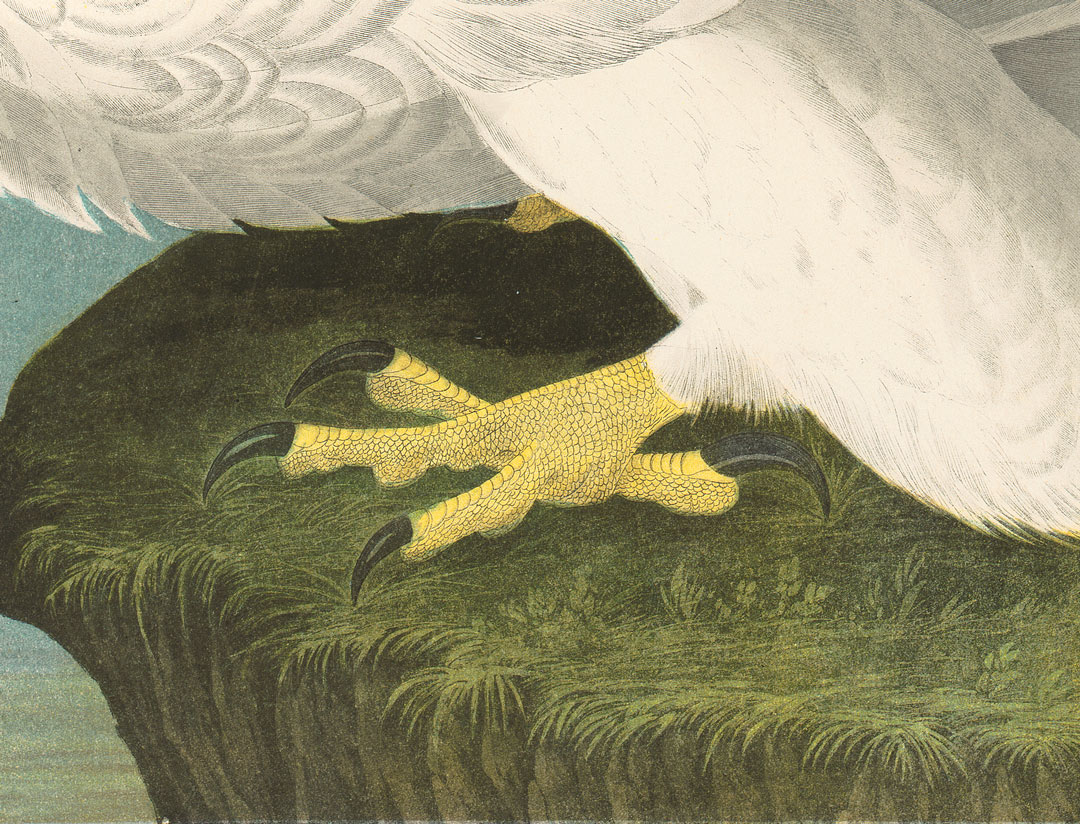



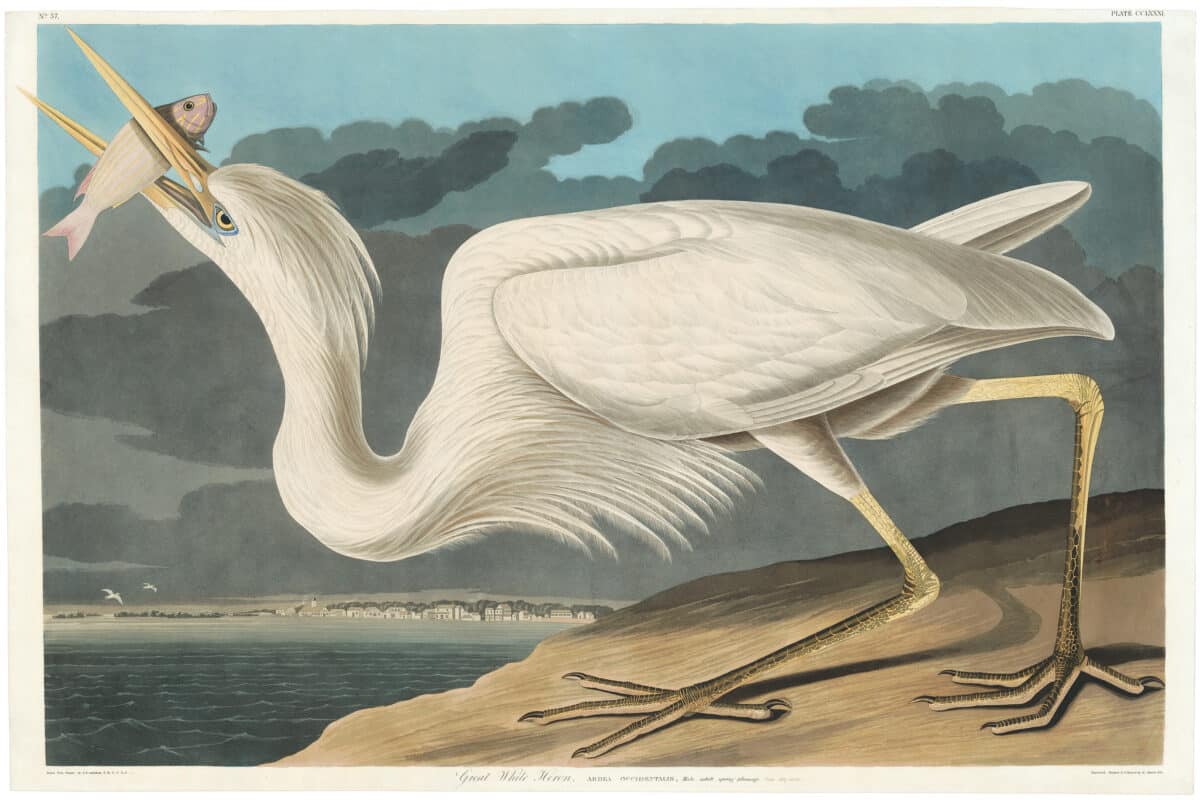


Great article, I have 3 double elephant prints from your company. I feel privileged to have these along with the outstanding framing that you do, and am always looking for another print, keep up the good work.